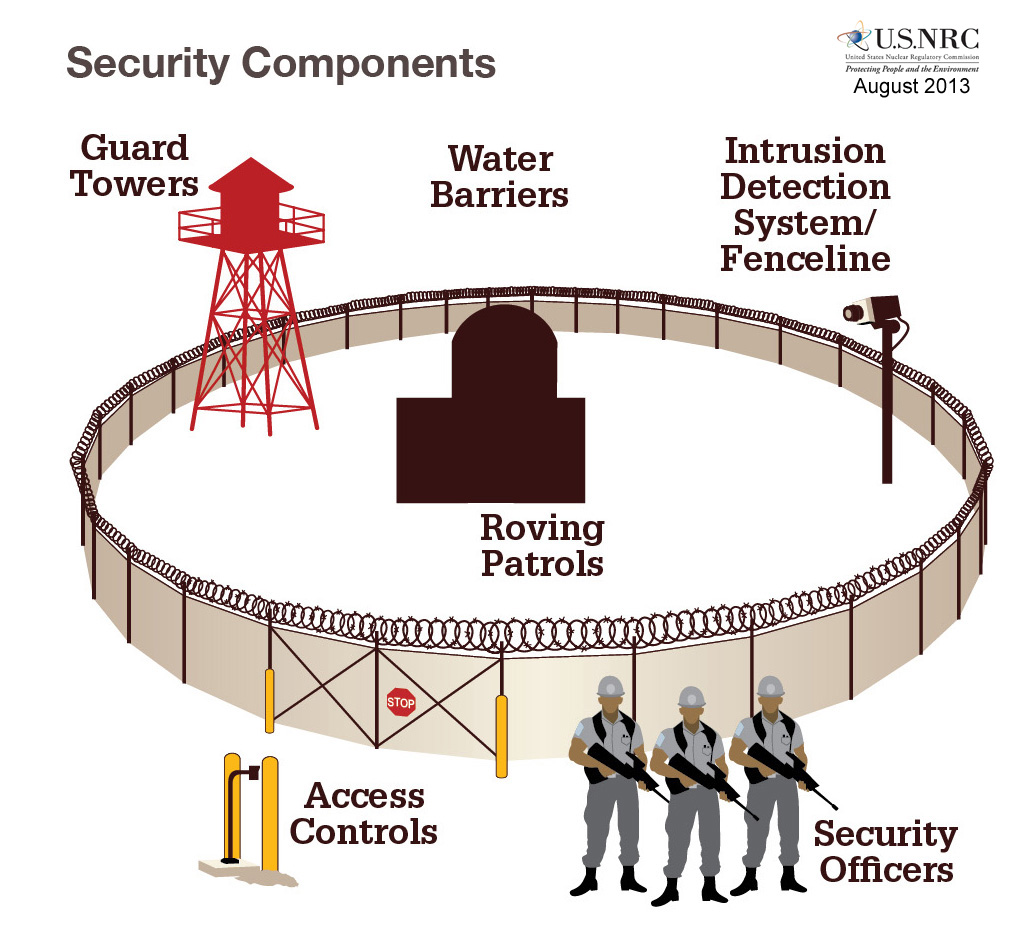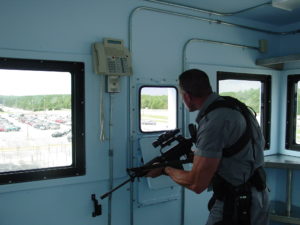Fission Stories #177
The NRC has long required an array of security features intended to lessen the likelihood of radiological sabotage at nuclear power plants. Gates, guns, and guards are among the methods used to protect against acts of malice.
Even before the tragic events of 9/11, the NRC used force-on-force tests to evaluate how well the various security elements fit together to deter sabotage. During the force-on-force tests, a small group of mock intruders seek to simulate the destruction of enough equipment to cause release of radioactivity before security force personnel intervene.
In response to 9/11, the NRC increased the size of the mock intruder team and the frequency that each nuclear plant gets a force-on-force-test. Prior to 9/11, the interval was about once every eight years. Now, the tests are conducted once every three years.
The mock intruders have certain advantages during the tests. Nuclear power plants are large facilities with more than one set of equipment that must be defended. And the NRC’s regulations allow for one plant worker to aid the mock intruders by providing blueprints and enabling access.
The security officers also have certain advantages. Bullet-resistant enclosures may shield them while the mock intruders must expose themselves while simulating destruction of key equipment.
As shown in Table 1 of the NRC’s annual report to the US Congress on security, the NRC monitored force-on-force tests at 23 nuclear facilities last year (22 nuclear power plants and one nuclear fuel cycle facility). Each force-on-force test typically consists of three exercises pitting the mock intruders against the security force personnel, so there were nominally 69 force-on-force exercises monitored by the NRC last year. Two exercises had indeterminate results due to process problems arising during the exercises while two other exercises had to be canceled. Of the 65 exercises evaluated by the NRC, one had the mock intruders successfully simulating the destruction of all equipment necessary to cause radiological releases.
Our Takeaway
The force-on-force tests are very important measures of physical protection against radiological sabotage as Ed Lyman explained in his All Things Nuclear post.
The glass half-empty perspective would point to the one failed exercise as evidence that nuclear facilities remain vulnerable to sabotage more than a decade after 9/11. After all, the NRC notified the owner more than a month in advance of the date and time of the force-on-force test, a courtesy that real intruders would likely forego.
The glass half-full perspective would point to the 64 successfully defended mock attacks as evidence of robust security. Plus, the exercise failure came during a mock attack and allow for fixes to be implemented that would deter a real attack.
There’s validity to both perspectives. Nuclear plants remain potential targets in an increasingly confrontational environment. Force-on-force exercises provide very insightful assessments of protection against potential attacks. As Ed detailed so well in his commentary, the NRC should not be lessening the value of the force-on-force tests by reducing the number of exercises conducted per test. Retaining robust force-on-force tests is an important way to prevent a successful mock attack to be replaced by a successful real attack.
“Fission Stories” is a weekly feature by Dave Lochbaum. For more information on nuclear power safety, see the nuclear safety section of UCS’s website and our interactive map, the Nuclear Power Information Tracker.



